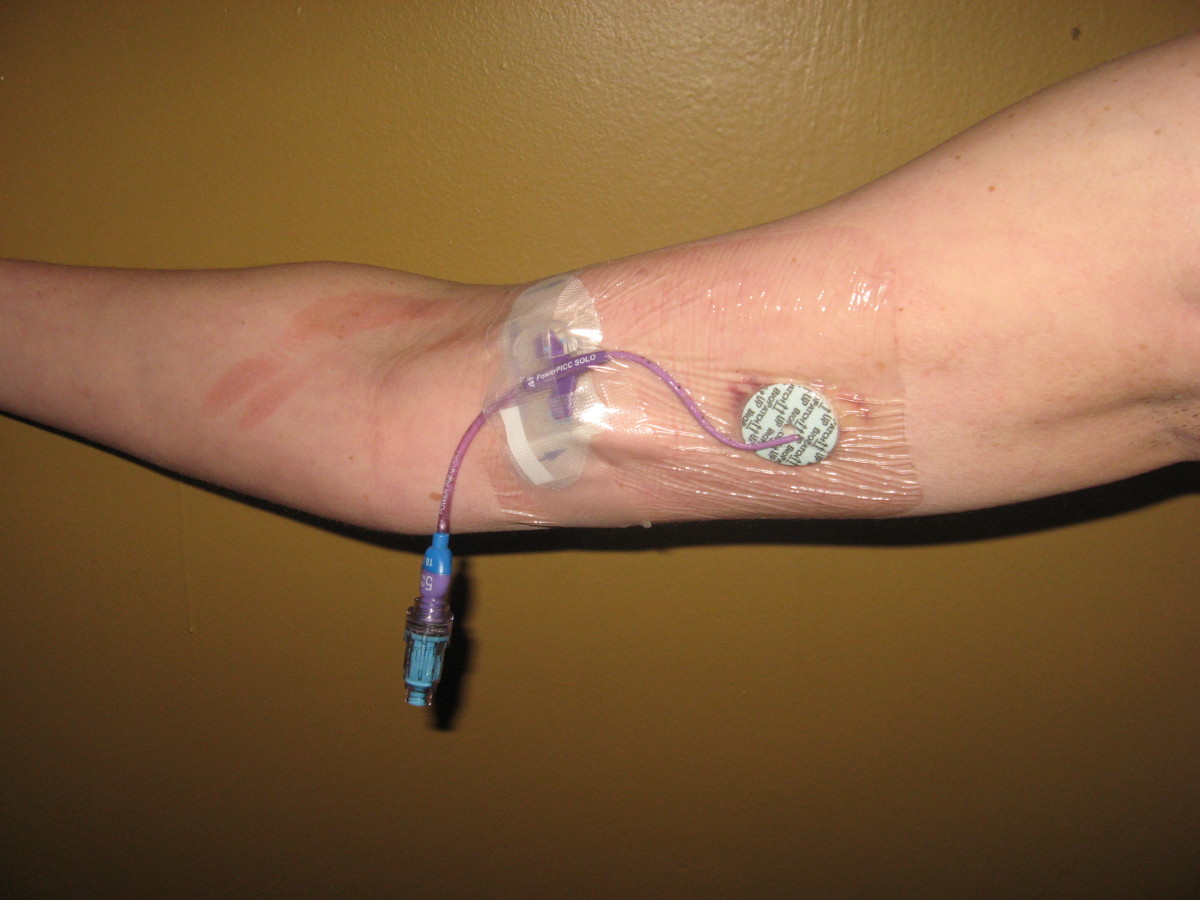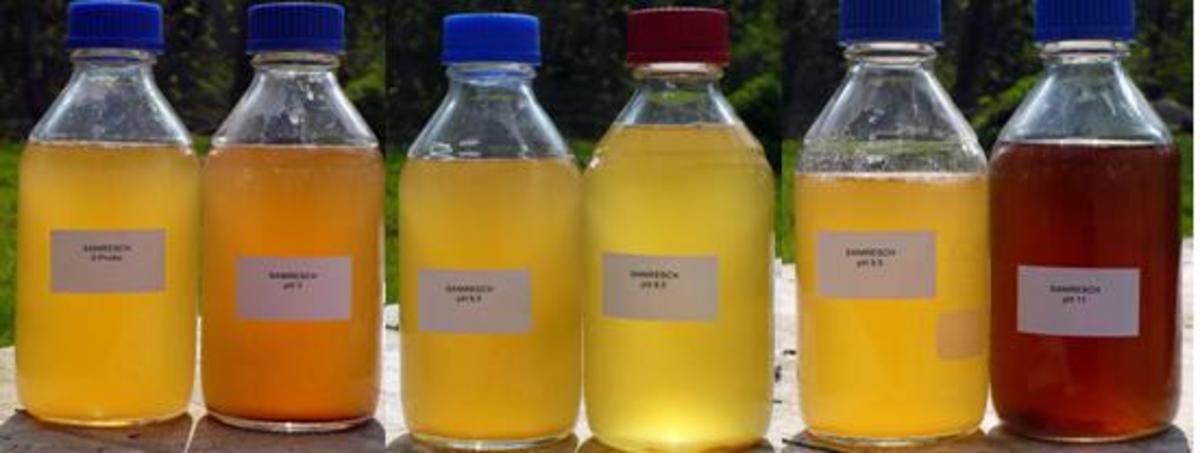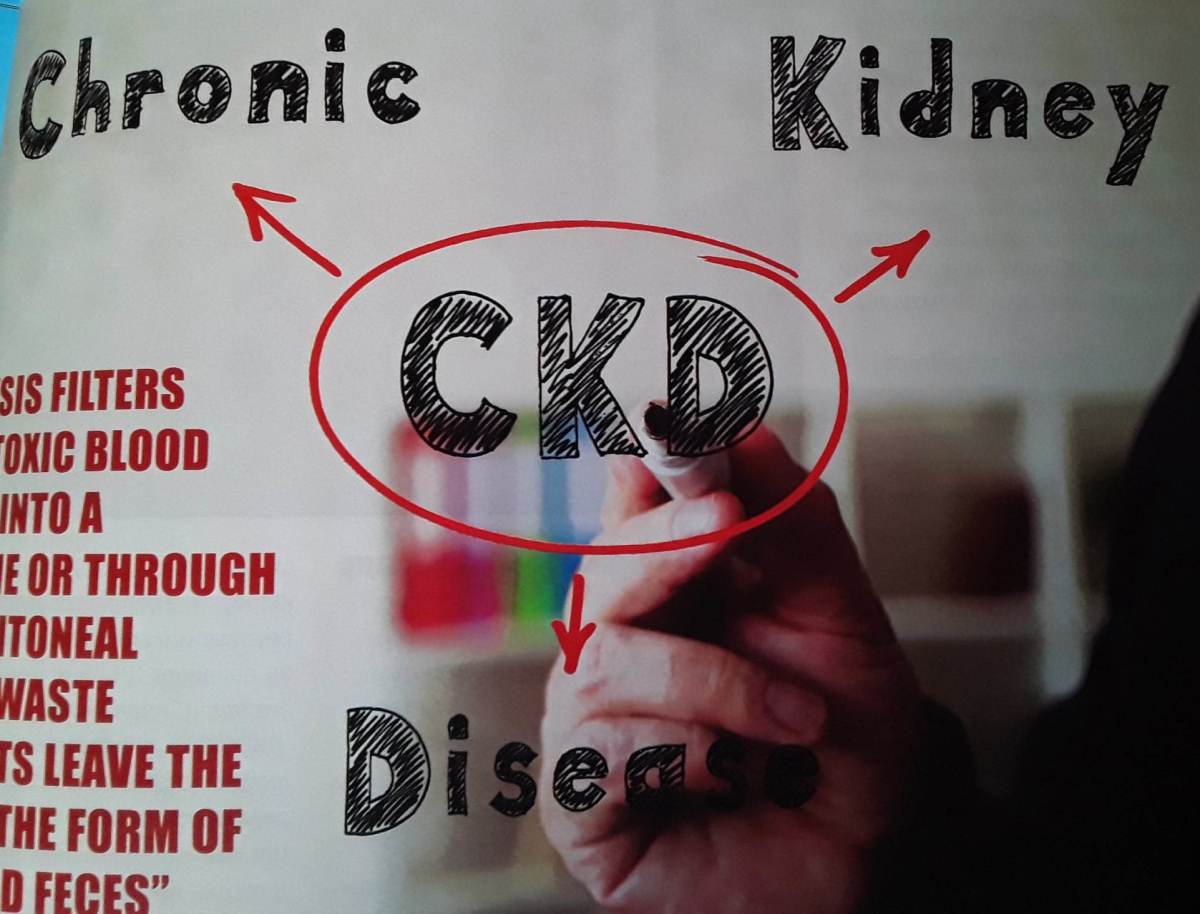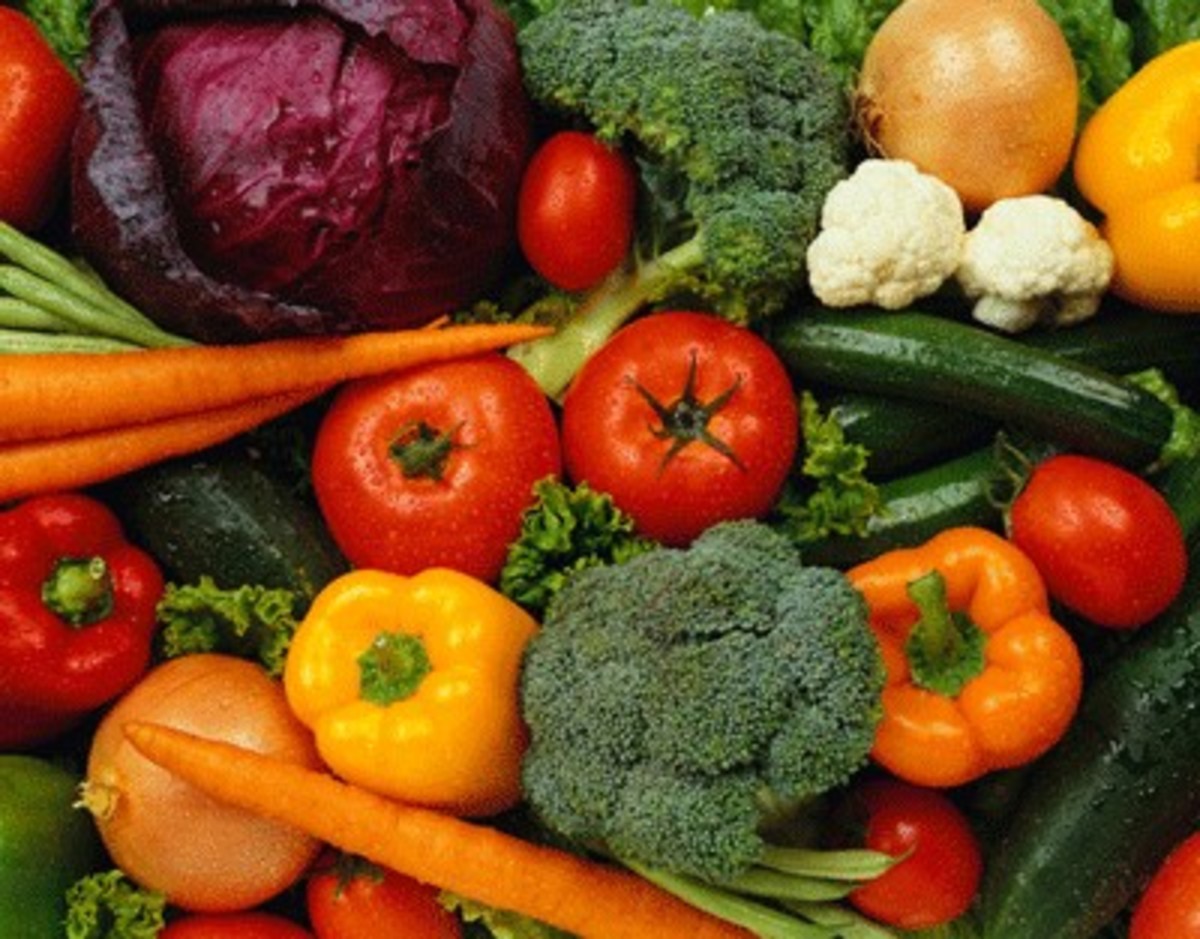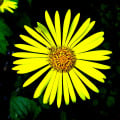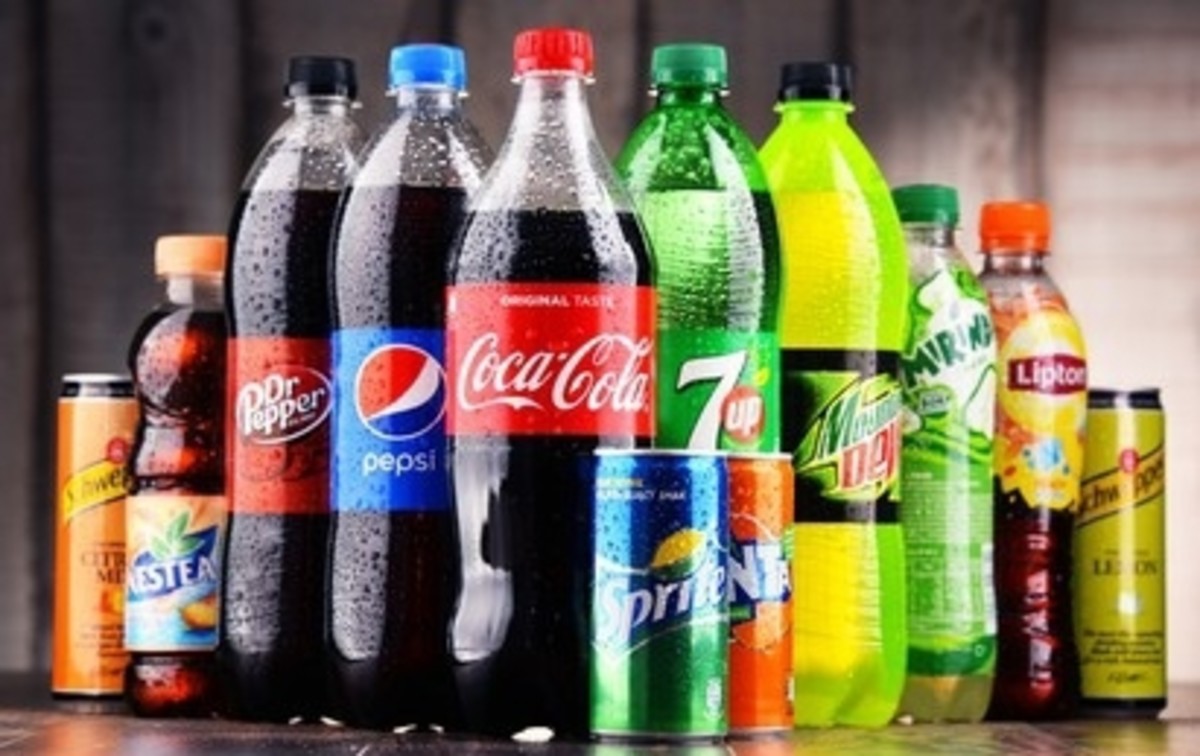Human Excretory System – Human Urinary System – and Do Birds Urinate?
Organ Systems in the Human Body
The 10 main organ systems in the human body are respiratory system, digestive system, urinary system, integumentary (skin) system, circulatory system, endocrine system, muscular system, nervous system, reproductive system, and skeletal system. Notice that instead of listing the 9 main organ systems in the human body, we have added the integumentary skin system so that we have 10 main organ systems of the human body. Also notice that in that list we do not list human excretory system but instead we list human urinary system.
Excretion and Egestion
We define excretion as the process by which waste products of metabolism are eliminated from the body. Such waste matter includes urine, sweat, and carbon dioxide gases. Metabolism is the process of chemical reactions that happens in the cells of living things so that life is sustained. And we define egestion as the discharge or expulsion of undigested food from the digestive tract through the anus. The word excretory is derived from the word excrete. This would therefore suggest that excretory system should include the elimination of urine, sweat, and carbon dioxide gases from the body. Elimination of feces from the body is a part of the digestive system. Elimination of sweat from body is a part of the integumentary (skin) system. Elimination of carbon dioxide gases and water vapour from the body is a part of the respiratory system. Elimination of water, urine and salts from the body is a part of the urinary system.
Organs of the Excretory System
The organs of the excretory system are the lungs, the kidneys, the liver, and the skin. Since we have not named “excretory system” as one of the 10 main organ systems in the human body, but rather excretory system is a system of four organs - lungs, the kidneys, the liver, and the skin, we are not going to dwell on it in this article but instead we shall discuss the human urinary system.
Human Urinary System
The human urinary system functions in the elimination of urine which contains:
1. Nitrogenous wastes which include ammonia, urea and uric acid.
2. Salt concentrations in body fluids which include Mg˟˟, K˟, and Na˟
3. Excessive water in the body in a process called osmo-regulation.
Parts of the Human Urinary System
The parts of the human urinary system are:
1. Kidneys - for filtering and regulating nitrogenous wastes, salt concentrations and body water
2. Renal arteries - comes from Aorta and are for supplying the kidneys with blood
3. Renal veins - goes into Inferior Vena Cava and are for taking blood away from the kidneys
4. Ureter tubes - goes into urinary bladder and are for carrying urine away from the kidneys to the urinary bladder.
5. Urinary bladder - is the reservoir for urine.
6. Urethra tube - comes from urinary bladder and exit urine out of human body.
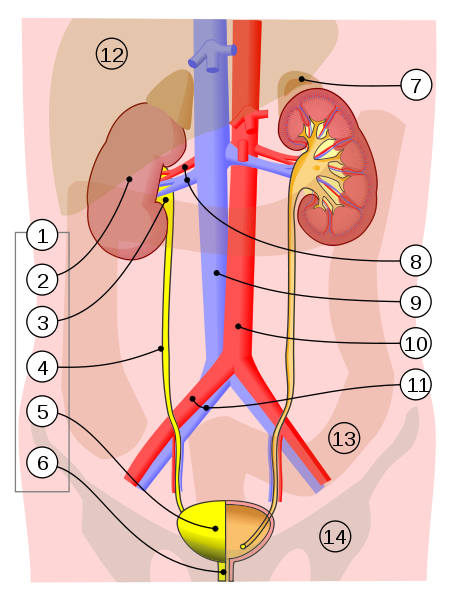
Key to above Diagram
1. Human urinary system, 2. Kidney, 3. Renal pelvis, 4. Ureter, 5. Urinary bladder, 6. Urethra (Left side with frontal section). 7. Adrenal gland Vessels, 8. Renal artery and vein, 9. Inferior vena cava, 10. Abdominal aorta, 11. Common iliac artery and vein. With transparency: 12. Liver, 13. Large intestine, 14. Pelvis
Human Kidneys
Kidneys have a shape that looks like a kidney bean. Humans have a pair of kidneys. In humans, one kidney is on the left of the spinal column whilst the other is on the right of the spinal column. In each kidney, there are about a million nephrons which have tiny blood vessels called glomerulus. It’s the glomerulus that filters wastes such as dead cells, proteins, minerals and excess water out of the blood and into urine. In every 24 hours, human kidneys can process about 200 litres of blood of which about 2 litres is converted into urine. We can therefore say that the kidneys are the key organs of the excretory system whose functions is regulating and controlling the following:
1. Filtering out poisonous nitrogenous wastes which include ammonia, urea, uric acid, and dead cells.
2. Filtering out salt concentrations in body fluids which include Mg˟˟, K˟, and Na˟ and retaining in the blood only the right minerals balance necessary for life.
3. Removal of excessive water in the body in a process called osmo-regulation.
Filtering Glucose by the Kidneys
When we eat food, the carbohydrates in the food are digested in the small intestines by enzymes and converted to glucose. This glucose is absorbed by blood and is taken to the body cells where it is processed again using oxygen to produce cells/body energy. If any glucose remains unprocessed, it will remain in the blood, and that glucose is poison to your body and has to be filtered by kidneys out of the blood. Such glucose is very poisonous such that it will slowly kill the kidneys resulting in renal failure.
Filtering Urea by the Kidneys
When we eat food, the proteins are digested in the small intestines by enzymes and converted into finer proteins. Blood will absorb the proteins and carry them to cells throughout the body. The cells will use the proteins for self-repairs and growth of the body. And there are proteins that remain after use by the cells which is returned to the blood and this waste is called urea. Urea contains nitrogen which is poisonous to the body. The kidneys will filter out nitrogen out of the blood and will put it in the urine. Urine is composed of body wastes which include water, urea, inorganic salts, and excess sugar and nutrients.
Common Causes of Kidney Damage
Each human kidney has about a million nephrons. The nephron has a tiny blood vessel called glomerulus which connects to the tiny urine-collecting tube called a tubule. The glomeruli are the filtering system in a kidney that sieve and regulate what’s going to be retained in the blood and what’s going into urine. It is through filtering by glomeruli that waste materials and water are able to leave the blood and exit into the urinary system. When the nephrons in our kidneys are destroyed by sickness they lose their filtering capacity of blood thus causing kidney diseases. The two most common causes of kidney damage are diabetes and high blood pressure. Diabetes destroys the kidneys in the sense that diabetes is a disease that keeps your body at a reduced usage rate of glucose. The unused glucose remains in your blood and because glucose is poisonous to the kidneys it will soon destroy nephrons in your kidneys. The other major cause of kidneys damage is high blood pressure because high pressure in your blood will burst some of the tiny blood vessels in your kidneys.
Urine Glucose Test Kits for Use At Home
Kidneys are vital organs for your survival. If unused glucose in your blood is what will destroy your kidneys, then, it should be realistic for one’s family to keep track of glucose levels in their urine and by extension blood glucose. You can do this at home by use of inexpensive urine glucose test kits which you can buy in your store. Normally, glucose is not usually found in urine and if say you continuously continue to see abnormal levels of glucose in your urine, then, you seriously should consider consulting your doctor immediately. Repeat, you seriously should consider consulting your doctor immediately. Normal glucose range in urine is 0 - 0.8 mmol/l.
Blood Pressure Test Kits for Use At Home
Again, kidneys are vital organs for you to remain alive. If high blood pressure in your blood is what will destroy your kidneys, then, it should be realistic for one’s family to keep track of their blood pressure levels in their bodies. You can do this at home by use of inexpensive blood pressure test kits which you can buy in your store. Normally, if you regularly continue to see abnormal levels of blood pressure in your body, then, you seriously should consider consulting your doctor immediately. Repeat, you seriously should consider consulting your doctor immediately. Normal blood pressure range in your body should be at least below 140/85mmHg and preferably below 130/80mmHg.
Do Birds Urinate?
Do Birds Urinate? Perhaps the civilized language for asking that question should be: Do birds pee? Yes, birds do pee. Birds’ urine is semisolid unlike that of humans that is liquid. Unlike humans, birds do not have urinary bladder. Birds’ excretion of nitrogenous wastes is in the form of uric acid (urate) unlike urea in humans. Uric acid is insoluble in water unlike urea which is soluble in water. A bird’s urine is therefore passed from the ureters into the cloaca. Cloaca is where urine (urate) and digestive waste (feces) are stored before being exited out of the bird’s body. The insoluble uric acid is exited from a bird’s body as a whitish substance together with the blackish feces. So, a bird’s dropping will usually contains white uric acid crystals and a black/greenish concentration of digestive wastes (feces).
Ostrich Urinate
Ostriches and rheas are the only birds that does urinate liquid wastes just like human do. Like humans, ostriches can drink a lot of water. An ostrich can drink 9 litres of water per day. In an ostrich, urine is stored in proctodeum which acts like “urinary bladder”. If an ostrich goes for two days without water, its urine turns into white fluid which is a form of concentrated urine. If an ostrich goes for more than three days without drinking water, then, it will not urinate liquid urine altogether. Like other birds, an ostrich can also go for several days without water. So, if water is available, an ostrich will drink it and pass liquid urine just like humans. If water is unavailable, then no problem and life will go on. It’s important to note that an ostrich is a very big bird with a capacity to kill an African hyena by just a few kicks. With such kind of a body, Mother Nature must have figured out that such a bird may find itself in a situation where it has too much salts in the blood that only by drinking plenty of water can blood salt balance can be achieved. This should be the reason why ostrich urine is in liquid form whilst other types of birds’ urine are semisolid.
Ostrich Urinating - Video
Do Birds Sweat?
Birds have adapted for water conservation in that they do not have sweat glands. Unlike humans, birds do not sweat to cool their bodies. Birds are able to cool their bodies by panting to expel body heat and also birds have a mechanism of high breathing rate. If birds do not sweat, they may actually go for a long period without drinking water. Since water is used by kidneys to control the concentration of salts in the blood, birds will not need to eat as much salts like humans. If you want your birds to die, just give them a little bit more table salt.


